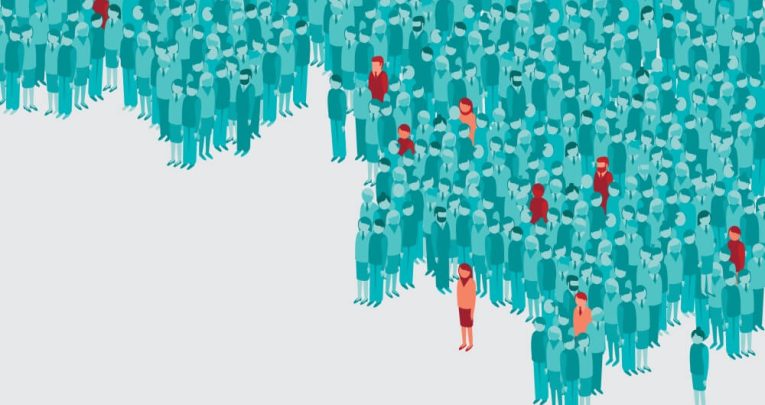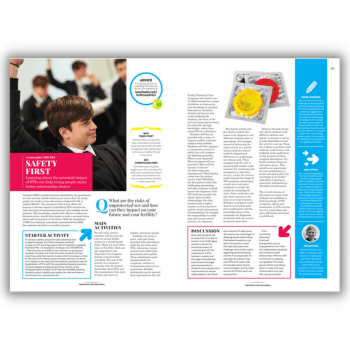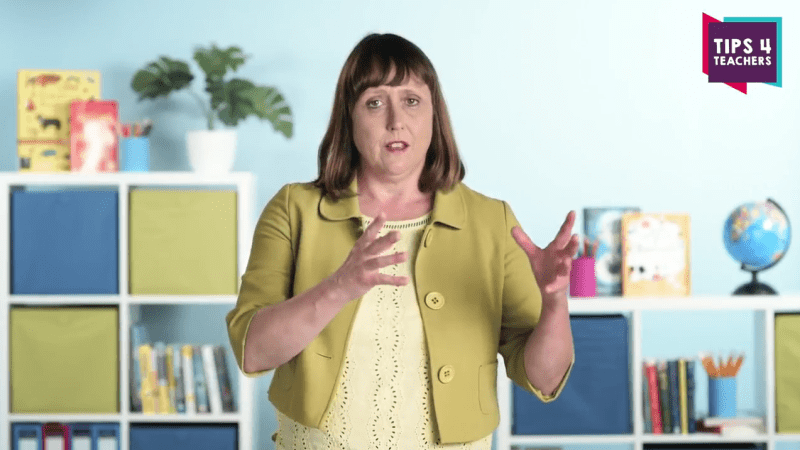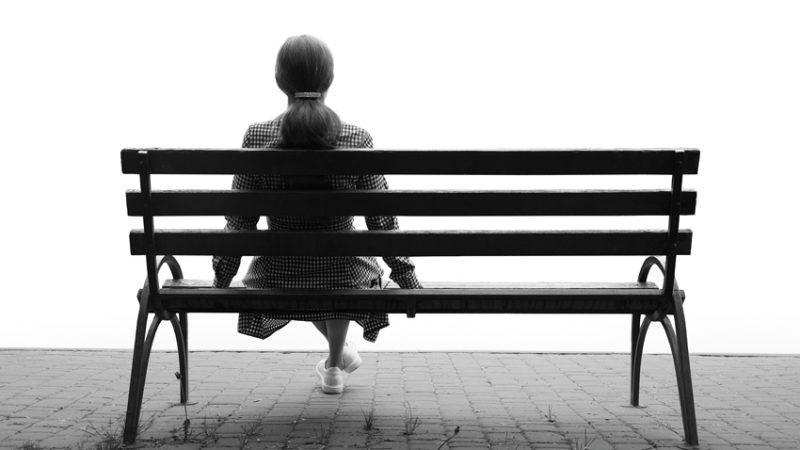Student health and wellbeing – Can negative moods be ‘contagious’?

Adam W Hunter finds out whether a recent scientific study examining how teenagers can ‘catch’ moods from friends may have potential implications for schools…

Even before the pandemic changed everything, schools were already stepping up their efforts at tackling student mental health and wellbeing.
But to hear Dr Stephanie Burnett Heyes – lecturer at the University of Birmingham’s School of Psychology – tell it, recent events may well have exacerbated a growing problem.
“In a way, it’s increasing divides between people who were coping well already and people who are not,” she says. “A lot of teenagers are stressed out. It’s hard to generalise, but indicators like rates of self-harm have been going up in recent years. Thinking about how we can harness the capacity of young people to support one another, and ensure groups have the emotional resources to cope, is very relevant.”
Alongside Dr Per Block, of Oxford’s Leverhulme Centre for Demographic Science. Burnett Heyes recently co-published a paper that she hopes will lead to an improved understanding of emotional wellbeing in adolescents.
In the course of studying two groups of musicians on short residential tours, Block and Burnett Hayes found that mood is contagious; that teenagers can ‘catch’ moods from friends, and that bad moods are more contagious than good ones.
Neither were that surprised at the findings, and the design of the study itself – which saw students placed in contained groups to exclude external influences – might account for the results. But what might the effects of these ‘contagious adolescent moods’ be in the mixed environment of a school?
Low mood tipping points
“Although the study was quite particular, we don’t expect that the effect would be absent [in other environments] – it might just be stronger or weaker,” Burnett Heyes says. “Mood contagion is something that’s been observed [before], and there’s good reason to think that it possibly happens in other species.”
The individuals in the study didn’t avoid or seek out peers based on mood. Those feeling low didn’t withdraw socially, nor did they abandon a friend when said friend was experiencing a ‘bad mood day’.
“Other studies have suggested negative mood might not be contagious, because it makes the person withdraw from social contact,” notes Burnett Heyes, “but maybe [withdrawal] was harder because they were all having fun and living together on these amazing music tours. Maybe in a school, people would be able to isolate themselves more easily. On the other hand, you might withdraw socially, but you’re still present in the classroom.”
With schools now fully returned and teachers looking ahead to the future, could the study’s findings help inform their approach to improving student wellbeing? Might there be certain powerful individuals who exert a large impact on collective moods and group dynamics?
“We looked for that and didn’t find it,” asserts Burnett Heyes. “Different people were happier on average than others, but there were no ‘mood influencers’. Though it would be interesting to look at a sadder or more stressed group, because you could look at tipping points. If you get a group where lots of people are sad, that could spiral – it would be great to identify where that point is, because that’s where you would want to deliver interventions.”
Can socialising on social media help mood?
Following the dramatic increase of online teaching and social interaction via smartphones, is there anything schools can learn from the student interactions these technologies encourage?
“We’re collecting data as we speak, from undergrads in their communal houses, to look at face-to face and mediated interactions,” says Burnett Heyes. “If you’re having a rubbish day with your housemates, could a phone call with a family member make up for that? And do you need two online interactions to have the effect of one face-to-face interaction, for example?” The findings so far suggest that mood goes both ways.
Teenagers can bring each other down, but will also support those they see as struggling – and mood doesn’t determine popularity in the short-term.
“In a way, we shouldn’t see the negative mood contagion as something bad,” ventures Burnett Heyes. “If the group is happy enough to absorb that negative mood, it’s spread into smaller portions across the network – a potential mechanism for social support, provided others aren’t too emotionally vulnerable. A happy person may get a bit less happy, but a sad person will become a bit less sad as well.”
In fact, teenagers want to help each other, and socialising with someone in a low mood is a risk most are prepared to take.
“We know there’s this high motivation amongst young people to interact with and care for their friends, and they’ll often support each other very generously. How do we use this while protecting young people from being harmed in the process?”
Compared to students, teachers are far more aware of the subtle influence they can have on others’ feelings and behaviour. If they’re feeling well, could their positive mood be ‘caught’ by others across the school community?
“I don’t know whether the effect would be stronger or weaker in a network where people have different roles,” says Burnett Heyes, “but it would be fascinating to find out. To what extent can a teacher buffer a group’s negative mood? Will it only work for certain types of emotion or relationship? What’s the impact on adults likely to be?”
Emotional wellbeing
If teachers wish to exert this kind of positive influence, they’d be advised not to repeat and reinforce negative opinions and anecdotes concerning the pandemic’s effect on young people – though as Burnett Heyes points out, it’s not just what we say that counts.
“If we didn’t tell them that the pandemic was bad, and didn’t communicate any negative emotion, they might not ‘catch’ it,” she says. “But we communicate in many different ways, and we don’t know the effects of that on a psychological level – probably a mix of verbal communication, body language and other things, both conscious and unconscious.”
Burnett Heyes is flush with further questions that have come out of her work, but for schools now attempting to overcome the lasting effects of isolation among their students, she offers the following advice:
“Giving emotional support is more difficult than giving practical support – the cost is higher. Explicitly talking to students about how to help each other, and about their own emotional wellbeing while supporting each other, could be really relevant.”
Mental health research notes
Dr Burnett Heyes’ and Dr Block’s study sample comprised two groups of adolescents – 79 in total, aged 15 to 19, on short residential classical music performance tours.
Each day, participants reported the top two to six peers they had interacted with, and rated how much they experienced each of 12 mood words on a standard 1-5 numerical scale. In all, they measured 1,775 interactions and 4,724 mood scores.
The mood contagion effect was large. Individuals were 1.26 times more likely to experience a particular mood state for each interaction partner that reported this mood. Bad moods were more contagious than good, with ‘bad mood contagion’ accounting for 23% of variance, compared to 14% for ‘good mood’.
Connected individuals were more similar in mood, and became reciprocally more similar over time – i.e. participants first formed a tie, after which their moods became more similar.
To model the short-term co-evolution of mood and interaction, control for environmental influences and distinguish mood contagion from social selection, all individuals in the bounded group were sampled daily.
The main limitation was the representativeness of the sample in terms of age, demographics, and setting. However, the authors expect this to limit generalisability in terms of the magnitude of effects, not the presence of mood contagion itself.
As Burnett Heyes explains, “We had quite an optimised design for measuring this kind of thing. What we lose in representativeness of the sample we gain in control of the group and environment.”
Adam W Hunter is a former teacher turned writer, journalist and musician; follow him at @adamwhunter












